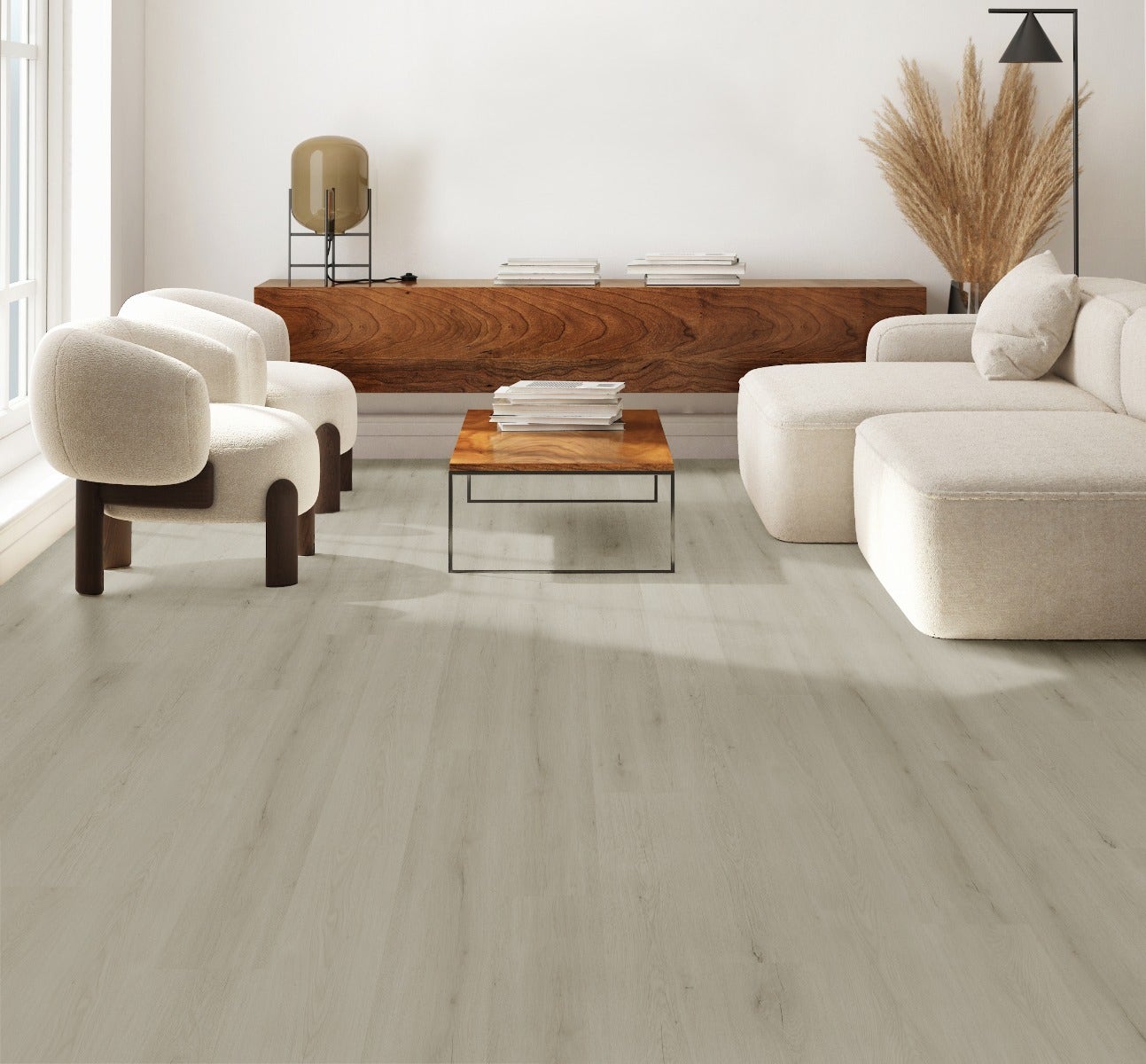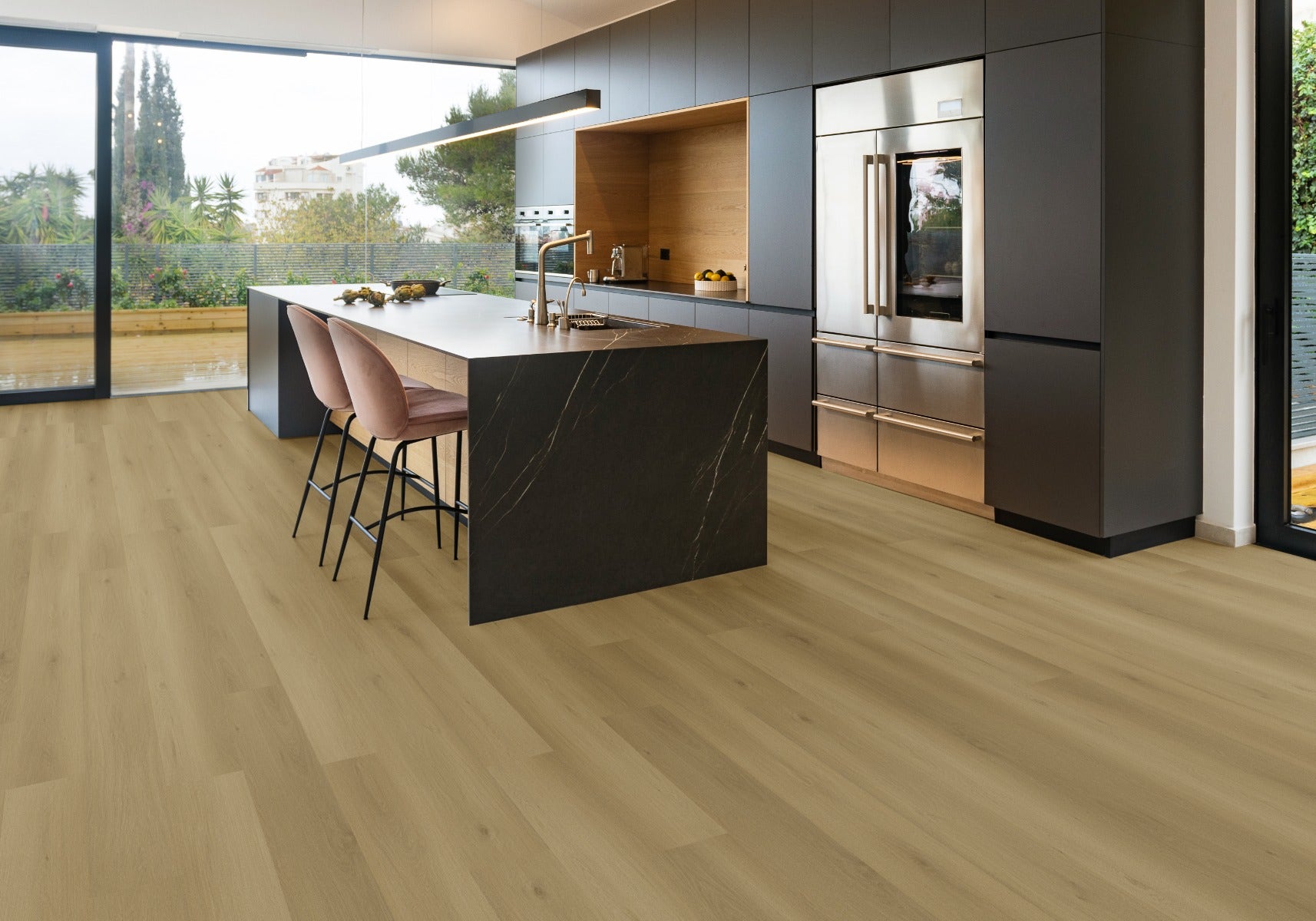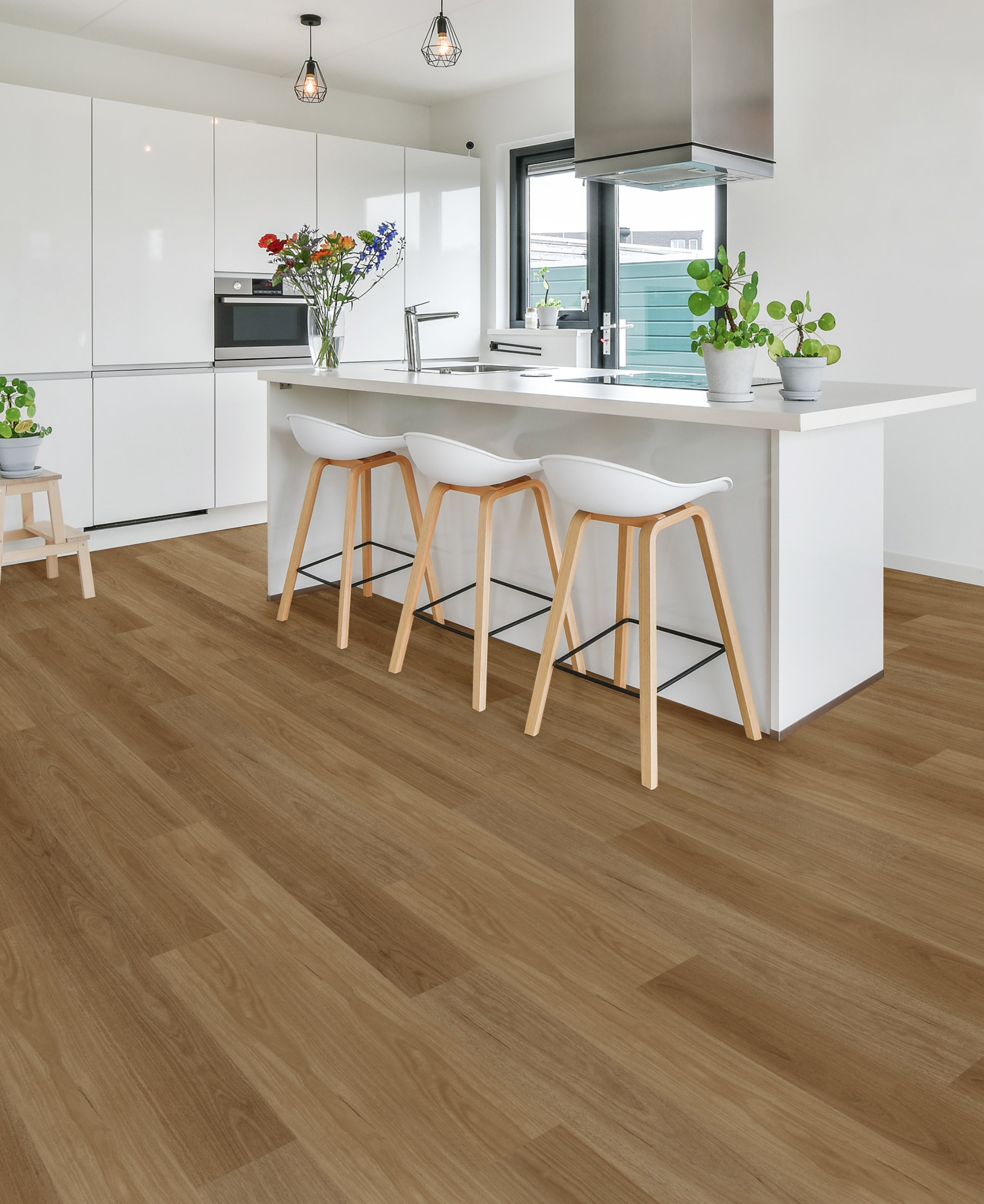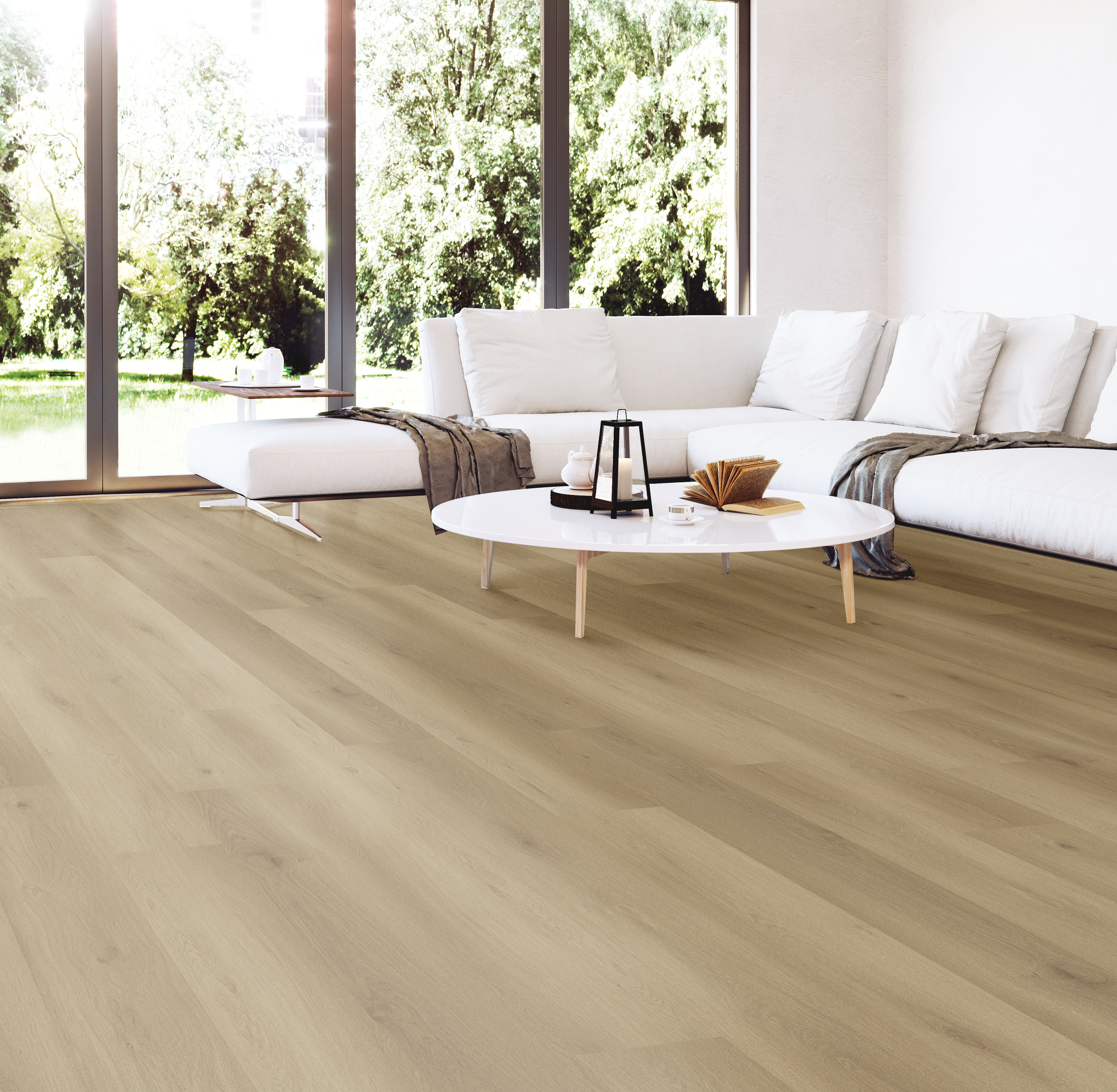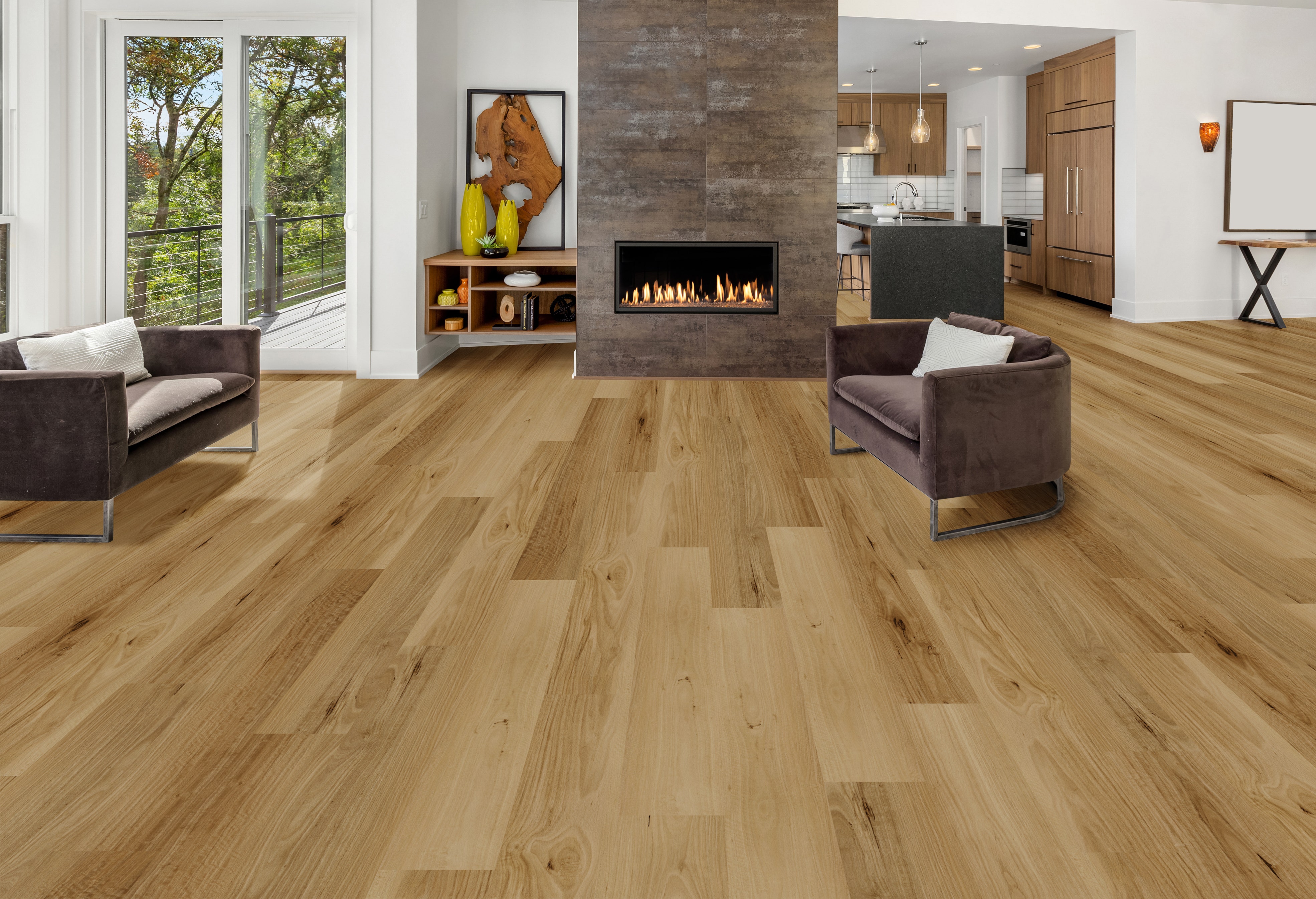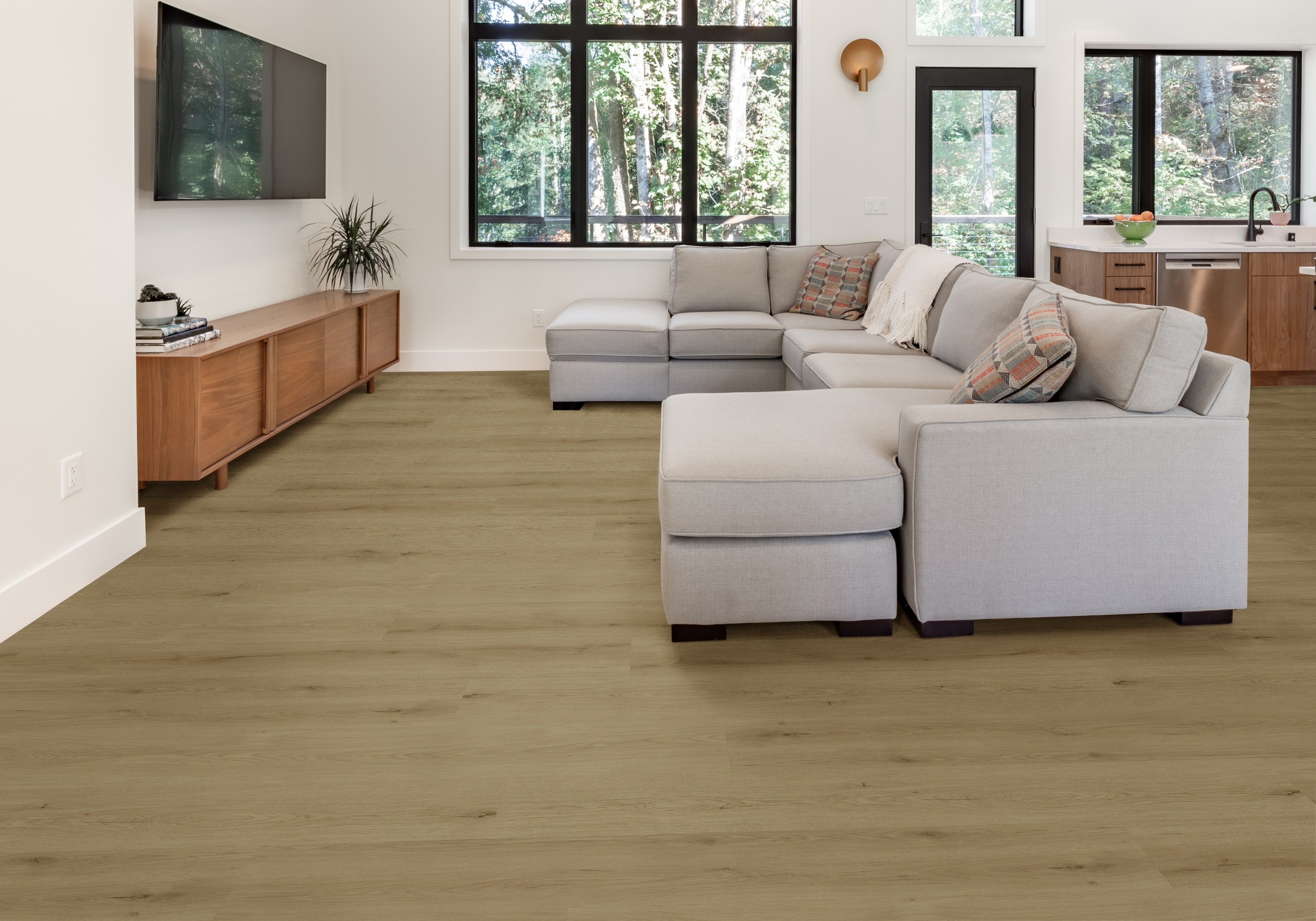Inspiration,
Articles,
DIY Advice
LVP Flooring – Your Ultimate Guide to Luxury Vinyl Planks
28.02.24


Step beyond the ordinary and into the extraordinary with Luxury Vinyl Plank (LVP) flooring from Amber.
With unmatched durability, stunning designs, and easy installation, LVPs will give your floors a facelift without breaking the bank!
What Is LVP Flooring?
Luxury Vinyl Planks offer the durability and flexibility of vinyl with the appearance and texture of natural wood.
LVP flooring has become increasingly popular because it stands out from traditional flooring options in several ways:
- Cost-effectiveness
- Design variety
- Easy installation
- Low maintenance
- Sustainability
Hybrid LVP in Grand Heritage Limewash
What Is LVP Flooring Made Of?
Tarkett's LVPs available here at Amber are constructed from five distinct layers.
- Ultimate PUR (Polyurethane-reinforced) layer: This hard-wearing top layer protects against scratches and dents.
- High-definition printed layer: Tru-Grain™ Technology achieves a realistic natural wood appearance.
- Rigid Composite Core (RCC): The core of the plank provides strength and the feel of solid wood underfoot.
- I4F Click Technology®: This design simply requires dropping, locking, and clicking the planks into place.
- Acoustic backing layer: Soundblock™ Technology significantly reduces noise transmission by 19 decibels.
Tarkett cares about the environment, producing each plank without harmful compounds. This process results in indoor air quality that's ten times better than Europe's highest standards!
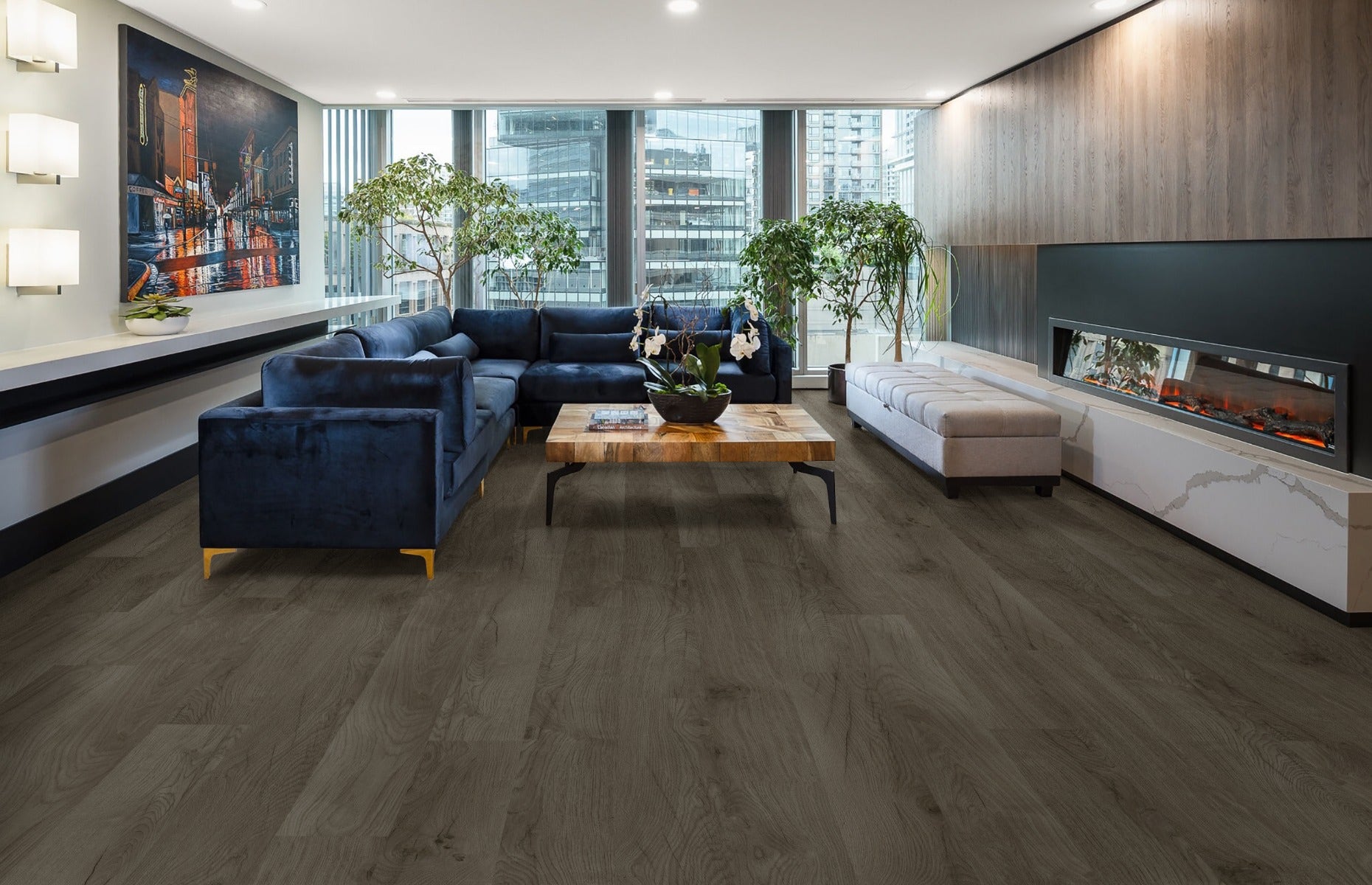
Benefits of LVP Flooring
- Durability: Designed to withstand heavy foot traffic, including scratches, scuffs, and dents from stilettos.
- Waterproof: Inherently waterproof and stain-proof, making it suitable for kitchens, bathrooms, and laundries.
- Design variety: A range of colours, patterns, and textures are available to match any decor style.
- Straightforward installation: The click-together (with no adhesive) design allows for quick and easy DIY installation without professional help or specialised tools.
- Cost-effectiveness: Mimics the look of high-end natural materials at a fraction of the cost.
- Low maintenance: Unlike natural wood or stone that needs regular sealing or waxing, LVPs can be kept pristine with routine sweeping, vacuuming, and mopping.
- Comfort underfoot: Plank construction includes a core layer that provides a softer, more forgiving surface to walk on compared to hard tile or stone.
- Noise reduction: The thickness and materials used in the planks absorb sound, minimising noise transmission such as footsteps, dropped items, and chair movements. This feature is especially useful for multi-level homes and apartments.
- Extreme temperature resistance: Won't warp or crack under varying harsh Aussie temperatures.
- Allergen reduction: Minimises where dust and other allergens can build up, helping improve the quality of your family's life.
- Sustainability: Many LVP options are made from recycled materials and are fully recyclable.
Comparing LVPs With Other Flooring Options
LVPs vs Hardwood
| LVPs are | Hardwood is |
|
|
LVPs vs Laminate
| LVPs are | Laminate is |
|
|
LVPs vs Tiles
| LVPs | Tiles are |
|
|
LVP Flooring Installation
After weighing up your flooring options and choosing LVPs, you must now decide on their installation method!
Professional Installation
| Pros | Cons |
| Expertise: Professionals have the experience and skills to do the job right the first time. Efficiency: They can complete the installation faster with the right tools and techniques. Warranty: Some warranties require professional installation to remain valid. |
Cost: Labour costs can be high. Scheduling: You may have to adjust to the installer's schedule. |
DIY
| Pros | Cons |
| Cost savings: Significantly reduce costs by not paying for professional labour. Flexible timing: Schedule the project according to your timetable. |
Skill level required: The process might be challenging if you're not handy or inexperienced with flooring. Time consumption: DIY projects often take longer than expected, especially without professional tools and knowledge. Potential for mistakes: Errors can occur, leading to wasted materials and possibly needing professional help to correct issues. |
If you decide to go down the DIY route, follow these installation steps.
1: Acclimate the Flooring
Store the LVPs in the room where they’ll be installed for at least 48 hours before installation to acclimate to the room's temperature and humidity.
2: Prepare the Subfloor
Remove any debris, nails, or staples from the subfloor, then clean it and allow it to dry. Then, use a levelling compound to fill in low spots and sand down high spots.
3: Measure the Room
Calculate the room's square footage to determine the amount of flooring needed, adding 10% for waste and cuts.
4: Plan the Layout
Decide on the direction of the planks. It’s typically recommended to run the planks parallel to the longest wall or main light source.
5: Install Underlay (if Necessary)
If the LVPs you choose don’t have a pre-attached underlay, install a suitable underlay according to the manufacturer's instructions. The LVP products we use here at Amber come with a pre-attached foam backing to help cover sub-floor imperfections so you can lay them directly onto your existing floor in most cases.
6: Cut the First Row
Measure and cut the planks for the first row, ensuring the cut edge is against the wall.
7: Click the Planks Together
Start from a corner, laying the first plank with the cut edge against the wall. Continue connecting planks end-to-end, using a tapping block and mallet as needed.
8: Stagger the Seams
As you start new rows, stagger the seams by at least 15 cm from the seams in the previous row for a more natural look and added stability.
9: Fit Around Obstacles
Measure and cut planks using a jigsaw or utility knife to fit around cabinets, doorways, and other obstacles.
10: Install the Final Row
Measure and cut the planks to fit the last row, leaving a 6 mm gap around the room's perimeter to allow for plank expansion and contraction with changes in temperature and humidity.
11: Add Transitions and Trim
Install transition strips at doorways and skirting boards around the room’s perimeter to cover the expansion gap and create a neat, finished look.
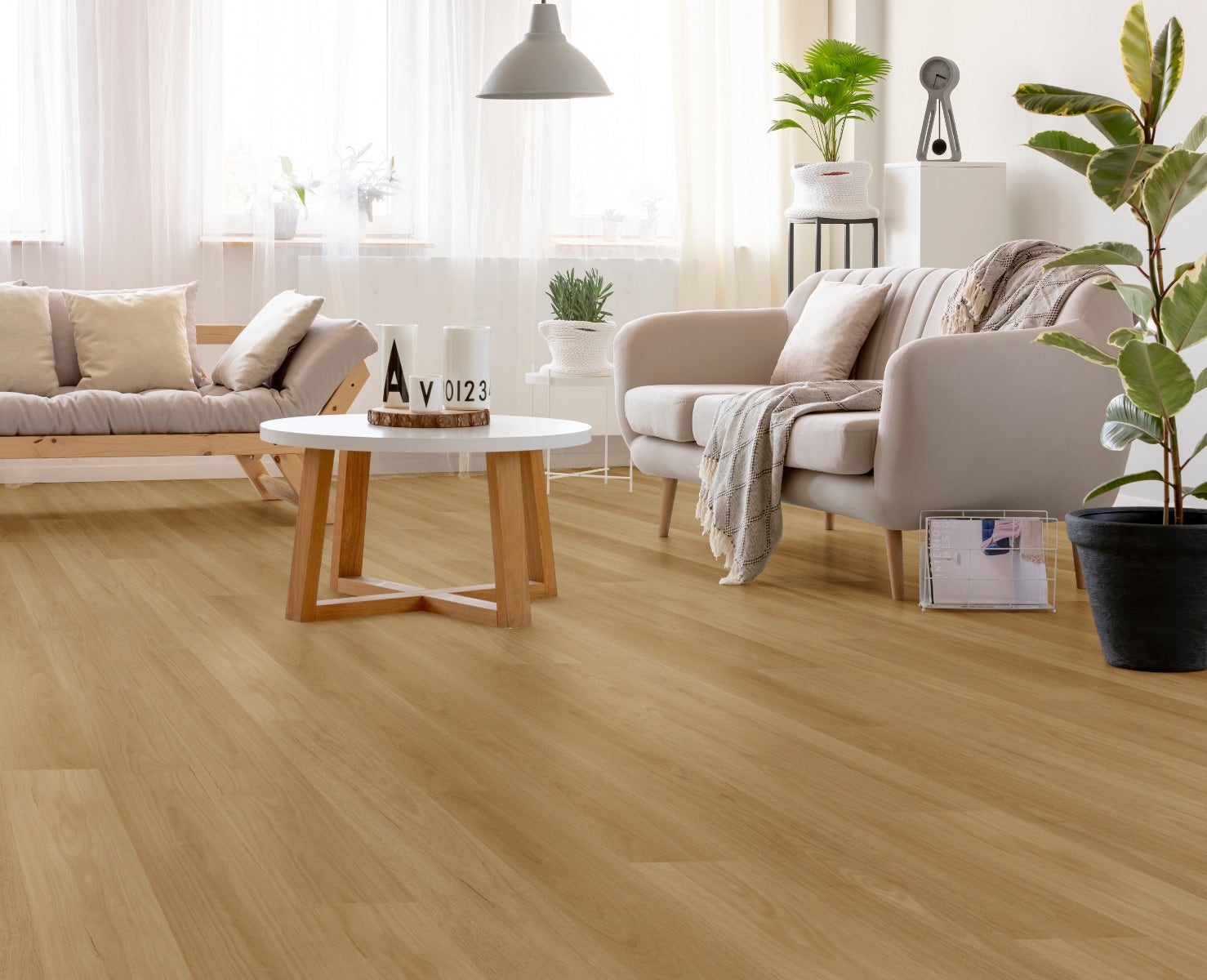
Versatility and Design of LVPs
Tarkett's LVP flooring uses printed Tru-Grain™ Technology to recreate the look of natural timber in seven unique styles and 12 gorgeous colours.
- Grand Heritage Limewash, Taupe, and Classic
- Oakland and Oakland Classic
- Savannah and Savannah Brown
- Spotted Gum and Spotted Gum Modern
- Riverina
- Blackbutt
- Clean Oak
This variety means you can incorporate LVP flooring into different decor styles.
Classic: Rich, deep oak or walnut tones and distinct grain patterns complement the timeless appeal of classic decor.
Modern: Minimal grain visibility in neutral colours like light grey or charcoal is perfect for a contemporary, minimalist look.
Coastal: Planks that mimic light, weathered wood, like limewash, evoke a beachy, relaxed feel.
Farmhouse: LVPs that replicate reclaimed wood in warm beiges, tans, and browns enhance the cosy, rustic charm of the farmhouse style.
Industrial: Dark brown, charcoal, or planks that resemble concrete fit the raw, edgy industrial aesthetic.
Scandinavian: Light wood tones with minimalistic grain patterns and a matte finish match this clean, bright style.
What Is Best To Clean LVP Flooring With?
Follow these cleaning and maintenance tips to keep your LVP flooring beautiful and functional for years to come.
Daily:
Sweep with a soft broom or vacuum with a hard floor attachment.
Wipe up spills immediately.
Weekly:
Mop with a mild cleaner designed for vinyl flooring. Steer clear of abrasive cleaners and bleach, as these can damage the floor's surface. Even though LVPs are water-resistant, excessive water can seep through the edges and cause damage, so avoid using lots of water when mopping.
Maintenance Tips
Prevent scratches by keeping pets’ nails trimmed and avoiding dragging furniture across the floor. It’s a good idea to use protective pads under furniture. Use doormats at entrances and rugs in high-traffic areas to minimise dirt and debris. Protect from fading caused by prolonged exposure to direct sunlight by investing in curtains, blinds, shades, shutters, or UV-protective window films.
FAQs About LVP Flooring
What Is the Downside of LVP Flooring?
The main downside of LVP flooring is that it doesn't improve property value as much as natural wood or stone flooring.
Additionally, while LVP flooring is durable and long-lasting, once it wears out, you cannot refinish it; it must be completely replaced.
Is LVP Flooring Better Than Laminate?
LVP flooring is often considered better than laminate due to its superior water resistance, more realistic timber look, and softer feel underfoot.
Is LVP Flooring 100% Waterproof?
Yes, it is! So, it's suitable for installation in areas of the home prone to moisture, such as bathrooms, kitchens, and laundries.
Transform Your Home With LVP Flooring
Do your floors need a new lease on life?
With LVPs, you're not just choosing a new floor; you're opening the door to endless style, comfort, and resilience.
If you're still wondering, "What is LVP flooring?"- Amber has the answer. So please contact our team today by filling out this online form.
We also encourage you to browse our stunning, high-quality LVP flooring range online. Then, visit a showroom near you to see the range in person. You can also book a free design consultation for professional advice from one of our in-store flooring experts.


